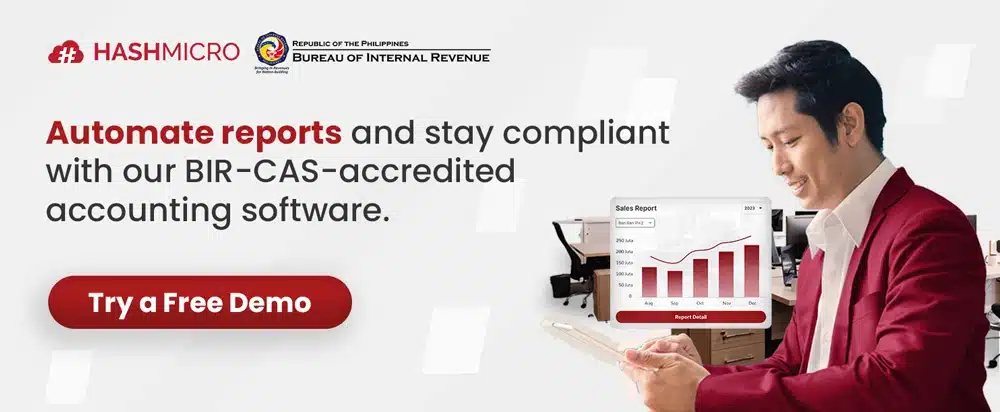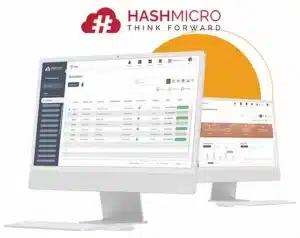Tracking income and expenses is vital for any business’s success, as it aids in creating an effective business strategy and budget. A key element of budgeting is the cost center. While it doesn’t generate revenue directly, a cost center isn’t merely a drain on the budget. Cost centers play a crucial role in contributing to a company’s revenue by boosting efficiency, enhancing customer service, or adding value to the brand and products.
They allow management to optimize resource usage by providing insights into their allocation. This article will explore the importance of cost centers, their functions, and other related aspects. Nang walang karagdagang ado, pumasok na tayo ngayon!
Table of Contents

Key Takeaways
|
What is a Cost Center?
Before we go deeper, you must be wondering what is a cost center? So, let’s first discuss the cost center meaning.
A cost center refers to a department or division within a company that doesn’t directly contribute to revenue, unlike a profit center. These roles are typically related to administration, services, and support. Eliminating these roles to cut costs isn’t an option, as they are essential for the organization’s overall functioning.
The quantity and size of cost centers within a company depend on its overall size. These centers are designated as separate units to facilitate easy tracking of their resource consumption. While cost centers don’t produce revenue, they do need funding to operate, often within a set budget. Managers are responsible for ensuring these cost centers run efficiently and stay within their budget limits.
Cost Center vs Profit Center, What’s the Difference?
In the definition above, we mentioned that a cost center is the opposite of a profit center. But what are the significant things that make them different?
Cost centers and profit centers have different roles in company operations. Cost centers are divisions or departments whose main focus is on expenses or costs, without directly generating revenue. Examples of cost centers are HR, IT, and customer service divisions, which provide essential support to the company’s operations.
Although they do not directly generate revenue, cost centers are essential for maintaining smooth operations and improving efficiency. Their function is more about managing costs and providing services that help other divisions achieve company goals.
In contrast, profit centers are business units or divisions that are directly responsible for generating revenue and profits for the company. Divisions such as sales, marketing, and production are examples of profit centers because their activities directly contribute to the company’s revenue.
Profit centers are evaluated based on their ability to generate profits and efficiency in managing resources to achieve revenue targets. Thus, while cost centers focus more on managing costs, profit centers play a major role in the financial growth of the company.
What is the Function of a Cost Center?
Previously, we discussed the definition of a cost center. Now you might be wondering what is the function of implementing a cost center for a company?
The primary objective of a cost center is to monitor expenses linked to a particular function within the company. For instance, by identifying a call center as a cost center, a company can accurately gauge its annual expenditure on customer support services.
Without designating such a cost center, tracking the costs of these services would become a complex task. It would involve breaking down the company’s total workforce and service fees across various divisions each month, making the process cumbersome and time-consuming. Cost centers streamline this process by centralizing and simplifying the tracking of expenses.
Cost centers serve as an essential tool for providing crucial metrics that aid in internal performance monitoring. By segmenting expenses into different cost centers, companies gain greater control and visibility over total spending. This structure allows management to make informed decisions and improve operational efficiency
Additionally, cost centers facilitate budget management by providing insights into each department’s spending patterns, enabling more precise budget allocation for future periods. They also aid in identifying cost-saving opportunities, as regular monitoring can reveal areas of excess spending or inefficiency that can be optimized to reduce overall expenses.
A cost center is responsible for managing and controlling expenses within a specific department or activity. To achieve this, methods like variable costing are crucial for identifying costs that fluctuate with production levels, such as materials and labor.
For example, in a manufacturing cost center, variable costing helps managers track the direct expenses incurred per unit produced, providing clarity on how operational changes impact the overall budget.
Types of Cost Centers and Examples
Organizational cost centers are classified into six broad categories. Here we present some cost center examples that you need to look at in depth:
Personal cost center
These cost centers are associated with a specific individual or a group of individuals within the company. For example, the Human Resources (HR) division acts as a personal cost center by working with various departments to address employee needs, manage recruitment processes, and ensure staff welfare.
Impersonal cost center
This type of cost center focuses on machinery, equipment, or physical locations. For example, the research and development (R&D) division serves as an impersonal cost center by utilizing equipment and facilities to develop innovative solutions for consumer issues or create new products that meet market demands.
Production cost center
Production cost centers are directly linked to the production process or play a role in supporting it. For instance, in a publishing company, the production team functions as a cost center that manages the printing and production of books, newspapers, and magazines, ensuring quality and timely delivery of the final products.
Service cost center
Service cost centers are responsible for providing essential support services to the company. An example would be the maintenance department, which acts as a service cost center by taking care of the company’s building and facilities, ensuring they are in proper working condition.
Operational cost center
These cost centers involve either individuals or machines to carry out specific tasks within the company. For example, the information technology (IT) department is an operational cost center, as it ensures that all hardware, software, and network systems are functioning efficiently and securely, thereby supporting overall business operations.
Process cost center
Focused on specific processes or events, these cost centers are designed to handle particular functions within the company. An example is the customer service department, which serves as a process cost center by managing customer complaints, enhancing customer satisfaction, and handling warranties to provide a positive experience for consumers.
The Importance of Cost Center
Cost centers play a crucial role in enhancing a company’s overall performance. As previously mentioned, they have clearly defined responsibilities and tasks, which are carefully planned and executed. These divisions and roles support the rest of the company in revenue generation, and the structured allocation of duties creates synergy among different departments.
Each type of cost center provides specific benefits that contribute to the success of the entire organization. For example, customer service departments assist customers by addressing their concerns, helping them find products, and clarifying business policies or warranties. Effective customer service adds value to the company and can foster a loyal customer base.
Similarly, departments focused on data and market analysis help companies gain insights into consumer behaviors and market trends. These divisions supply valuable data to evaluate the effectiveness of current business strategies and identify areas for improvement, driving informed decision-making.
Common Difficulties That Often Appear in Managing Cost Centers
Here are some common mistakes that often appear in managing cost centers:
Recording and calculation errors
One of the main challenges of managing cost centers manually is the risk of recording and calculation errors. Without an automated accounting system, cost recording is often done manually with spreadsheets or written notes. This increases the chances of input errors, inaccurate calculations, and even loss of important data, which can impact the company’s financial statements.
Inefficient cost tracking
Manually managing various costs from each cost center requires a lot of time and effort. Tracking costs such as employee salaries, operational expenses, and maintenance costs becomes difficult because the data is scattered across multiple sources and documents. As a result, management will find it difficult to get an accurate and real-time picture of the costs incurred by each cost center.
Difficulties in cost analysis
Cost analysis is an important aspect to evaluate the performance of each cost center. However, when data is managed manually, the analysis process becomes very time-consuming and error-prone. Managers will find it difficult to identify spending trends, measure efficiency, or find areas that require savings. This hinders quick and informed decision-making to improve the company’s performance.
To overcome this problem, integrating with an accounting system can be an effective solution that you can do. One example of an accounting system that can be used is HashMicro. The HashMicro system can integrate all financial activities into one platform to make it easier for management to analyze costs.
Schedule a free demo now!
You can also read our previous article on accounting software recommendations in the Philippines to understand other accounting systems.
Lack of transparency and accountability
Without a centralized accounting system, transparency and accountability in cost management suffers. It is difficult for management to track who is responsible for certain expenses or ensure that budgets are being spent as planned. This lack of visibility can lead to waste, inefficient use of funds, and potential fraud, compromising overall cost control.
Improve Cost Center Management Efficiency with HashMicro Accounting System

HashMicro’s accounting software is a software specifically designed to be able to manage various accounting needs, one of which is the cost center. In addition, this system also provides a free demo to provide an opportunity to learn how this system can help companies.
Furthermore, the use of the HashMicro system can make you avoid common mistakes in cost center management by streamlining all financial activities in one platform. Thus, management can more easily analyze financial activities.
Moreover, the system includes business budgeting software features that provide real-time reports, ensuring that management can effectively track and calculate financial activities. HashMicro also does not limit the number of users, enabling multiple people to use the system simultaneously, which increases transparency.
Here are the features of the HashMicro accounting system that can help you manage cost centers:
- Multi Level Analytical: Know the trend or insight of all financial transactions in real-time and can be filtered based on various categories.
- Cash Flow Reports: Monitor the company’s cash inflows and outflows to ensure sufficient liquidity, make proper financial planning, and identify and address potential financial problems.
- Financial Ratio: Helps users to analyze the company’s financial health quickly and accurately, and understand financial performance more deeply to support strategic decision making.
- Financial Statement with Budget Comparison: Provides a clear picture of how the company’s actual financial performance matches the plan to identify deviations and make necessary adjustments to achieve financial goals
Conclusion
Cost centers within a company refer to specific divisions or departments that oversee essential activities for the smooth operation of the organization, regardless of their direct impact on income generation. Although they incur costs for the company, they contribute to revenue indirectly by supporting various functions. To effectively monitor finances by department or division, businesses can utilize the cost center feature.
HashMicro’s Accounting Software provides an efficient way to manage both income and expenses. Our software helps streamline various accounting tasks, minimizing manual, time-consuming processes such as bookkeeping and asset depreciation calculations. Schedule a free demo now!




































